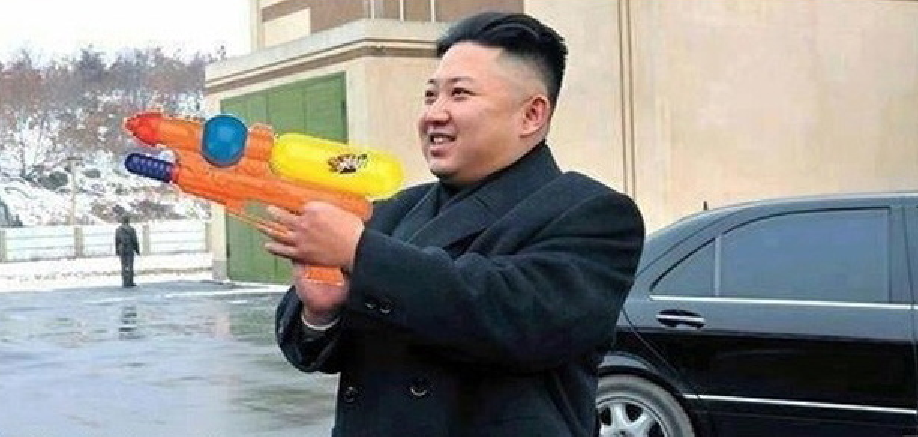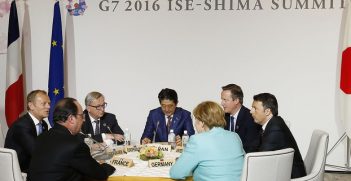What Internet Memes Can Offer International Relations Research

Internet memes offer a potentially rich source of data for International Relations research and there are many reasons for us to investigate what they may offer us in expanding upon our understanding of global politics.
The idea of memes was coined by Richard Dawkins in his 1976 book The Selfish Gene. He proposed that we transmit cultural information to one another in much the same way that we transfer genetic information from generation to generation. Whereas the latter uses genes, Dawkins created the term ‘meme’ to refer to this unit of cultural data, which is implicated in the sharing of everything from ‘tunes, ideas, catch-phrases, clothes fashions, ways of making pots or of building arches’.
‘Grumpy Cat’ and the Rise of Internet Memes
Cyberspace offers a particularly hospitable environment for memes to come into being, mutate and self-replicate, and the ‘internet meme’ has attracted its own definition; as Jean Burgess suggests, an internet meme is ‘a faddish joke or practice… that becomes widely imitated… [and appears] to spread and replicate ‘virally’… via distributed networks in ways that the original producers cannot determine and control’.
A famous example of an internet meme is Grumpy Cat. She became a worldwide phenomenon due to her feline dwarfism, which makes her look perpetually unhappy. Within 48 hours of her photograph being posted online, the image had been viewed over a million times and a star was born. Some of those viewers took the image and added new captions to it such as ‘I had fun once / It was awful’ and ‘You know what’s great about the outdoors? / Nothing’, and because of this continual process of mutation and dissemination there is now an entire series of ‘Grumpy Cat’ internet memes.
The Connection with International Relations
We also see internet memes that have very close links to International Relations. For example, Hillary Clinton is a meme creator, as is the non-state group ISIS. The ‘Kony 2012’ movement famously took social media by storm when Invisible Children posted a video online calling for the capture and prosecution of Joseph Kony of the Lord’s Resistance Army – another internet meme. All of these examples are either created by international actors or address issues that have significant overlap with IR scholarship.
Another area in which we see the convergence of international relations and internet memes is nuclear discourse; there are countless internet memes that represent Kim Jong-un, for example, and many of these depictions contain elements of nuclear discourse that have been identified by critical scholars. One such scholar, Hugh Gusterson, argues that ‘[t]he particular images and metaphors that recur in the discourse on proliferation represent Third World nations as criminals, women, and children’. We can identify examples of each of these representations in internet memes; for example we see Kim Jong-un represented as a gangster, there are multiple representations of him as a woman (such as here and here), and also a number of instances where Kim Jong-un is infantilised.
Overlap with Political Rhetoric
The parallels extend beyond critical scholarship; we can see overlap between Obama’s recent rhetoric, for example, and the online representation of Kim Jong-un. In April 2014 Obama stated that the US alliance with South Korea ‘does not waiver with each bout of [North Korea’s] attention seeking’. He indicated that ‘We don’t reward bad behavior’ and what is needed is ‘a consistent, steady approach’. This is starkly contrasted with his representation of the US. Again in April of this year Obama said that ‘the United States and I don’t have the luxury of choosing just one problem at a time’ – setting himself and the United States up as the paternalistic problem-solver of the world, and Kim Jong-un and North Korea as petulant children. We see Kim Jong-un similarly represented in internet memes: representations include the idea that North Korea’s weapons are nothing more than toys; that Kim Jong-un purportedly believes that the Acme Corporation of the Road Runner and Wile E. Coyote cartoons is a real company; that he is a student (and a bad one at that) instead of a state leader; and that he is a child at an amusement park, upset because he does not meet the height restrictions to, in this case, start a nuclear war. This overlap between traditional discourse and as-yet-underexplored discourse offers an interesting avenue of research.
Taking Internet Memes Seriously
There are a number of reasons why we should start to take internet memes seriously as a source in IR research. Actors that enjoy coverage in mainstream IR research – ranging from Hillary Clinton to non-state actor ISIS – are making and sharing internet memes. Internet memes also represent ideas and topics that the discipline concerns itself with ranging from civil war to aid to territorial disputes. Furthermore the audiences that engage with international affairs via internet memes are almost certainly larger in number and demographic variety than those that read our books and journal articles and these are the images that contribute to the worldviews of our ‘digital native’ students.
Internet memes offer a potentially rich source of data for future International Relations research and there is therefore ample reason for us to investigate what they may offer us in expanding upon our understanding of global politics.
Caitlin Hamilton is a doctoral candidate at UNSW Australia. She is the Managing Editor of the Australian Journal of International Affairs and an editor-at-large with E-International Relations. She can be contacted via email at caitlin.hamilton@unsw.edu.au or followed on twitter at @_CaitHamilton.





